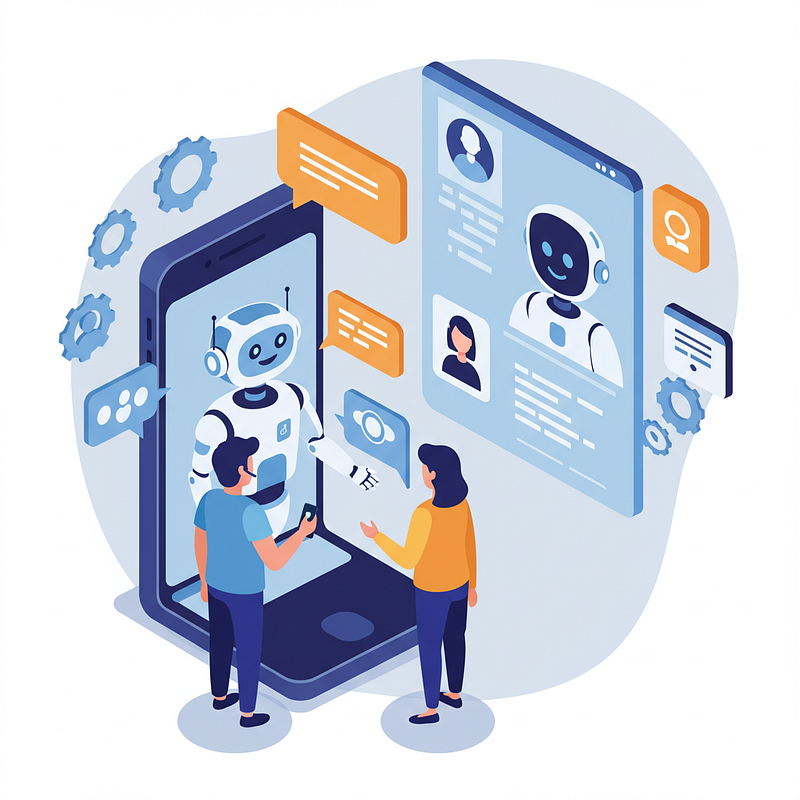Artificial Intelligence (AI) has become a transformative force in every industry, and one domain where its impact is especially noticeable is customer service. AI-powered chatbots and virtual assistants are not just enhancing how businesses interact with customers — they are revamping the entire customer service experience. However, despite their growing adoption, many enterprises still face significant challenges in fully harnessing AI for customer service.
The Rise of AI in Customer Service
In every industry, customers demand quicker responses, personalized experiences, and 24/7 availability. This has put pressure on traditional customer service models that rely on human agents. Enter AI-powered chatbots and virtual assistants, which are designed to address these demands by automating and streamlining customer interactions.
AI chatbots can respond to inquiries instantly, providing users with immediate support. Virtual assistants, on the other hand, go a step further by handling complex tasks, such as managing appointments, processing orders, and providing personalized recommendations. As a result, businesses can offer improved service, lower costs, and maintain a high level of customer satisfaction.

Challenges Enterprises Face in Adopting AI for Customer Service
Despite the many benefits AI promises, businesses are still encountering several hurdles in fully integrating chatbots and virtual assistants into their customer service processes. Here are some common pain points:
1. Lack of Personalization
While AI can automate responses, it often struggles with personalization. Customers expect interactions to be tailored to their needs, but many AI systems only deliver generic, scripted responses. This can make conversations feel robotic and impersonal, leading to frustration and customer dissatisfaction.
Example: A customer calling an airline to inquire about a flight change might interact with a chatbot. However, if the chatbot does not have access to the customer’s booking history or fails to address specific concerns like potential fees, the customer will likely turn to a human agent for resolution.
2. Inability to Handle Complex Queries
AI-powered systems, while effective at managing routine tasks, often struggle with more complex customer issues. For instance, a chatbot may be great at processing basic requests (like checking a balance or resetting a password), but if a customer’s question deviates from the standard script, it can leave them frustrated, often leading to a prolonged escalation process.
Example: A customer using a banking chatbot to inquire about a specific transaction dispute and the customer asks to provide details. While the AI-powered system can handle basic tasks like checking account balances or transactions, it may struggle to address complex queries. The chatbot may provide generic responses which results in the customer having to escalate the issue to a customer support agent, which frustrates them and leads to a longer response time.
3. Over-reliance on Automation
While automation is a major selling point of AI, over-reliance on it can backfire. Customers often prefer speaking to human agents when their queries are urgent, complex, or sensitive. A lack of clear escalation paths and support from human agents can create a bottleneck, negating the benefits of automation.
Example: If a healthcare provider’s virtual assistant can efficiently answer general questions about symptoms or appointments, the AI may fail to recognize critical emergency situations. This could prevent the customer from reaching a qualified human representative in time.
4. Integration Challenges with Existing Systems
Integrating AI chatbots and virtual assistants into an organization’s existing infrastructure can be complex and resource-intensive. Many businesses face challenges in connecting AI with their CRM systems, databases, and other tools, leading to disjointed customer experiences and inefficient service.
Example: A retail brand may have a chatbot to handle customer service queries, but if it doesn’t have access to the company’s inventory management system, it can’t provide real-time stock updates, leaving customers dissatisfied.
The Gap: What’s Missing in AI Customer Service Solutions?
While AI has a lot of potential, there is a clear gap in its ability to deliver truly seamless and personalized customer service. Here are some key areas where AI customer service solutions are falling short:
1. Data Integration & Access
One major gap in AI solutions is the lack of deep integration with the organization’s data sources. AI-driven systems, including chatbots and virtual assistants, need access to customer history, preferences, and transaction data to provide personalized experiences. Without this, AI systems risk being too generic and unable to handle complex queries.
2. Adaptive Learning Capabilities
Another gap is AI’s ability to continuously learn from customer interactions. While AI systems can handle predefined tasks, they need to adapt and improve over time based on new data and feedback. Without adaptive learning, AI becomes stagnant, which can reduce its effectiveness in addressing evolving customer needs.
3. Seamless Transition to Human Agents
Many businesses lack a smooth transition process when a chatbot or virtual assistant is unable to resolve a customer issue. Without the right escalation protocols, customers may find themselves frustrated when they cannot immediately speak to a human representative.
AI is undoubtedly transforming customer service, but businesses still face hurdles in maximizing its potential. The gap in personalization, query handling, and system integration can hinder the effectiveness of AI-driven customer support. As AI continues to evolve, businesses that invest in the right technology and embrace AI as an enabler rather than a replacement will be best positioned to offer personalized and efficient customer service. The future of customer service is bright, and AI is leading the way — if businesses are willing to bridge the gaps.
Ready to elevate your customer service experience?
Partner with OpenTurf Technologies and let us help you create smarter, more personalized interactions that drive customer satisfaction and business growth.



